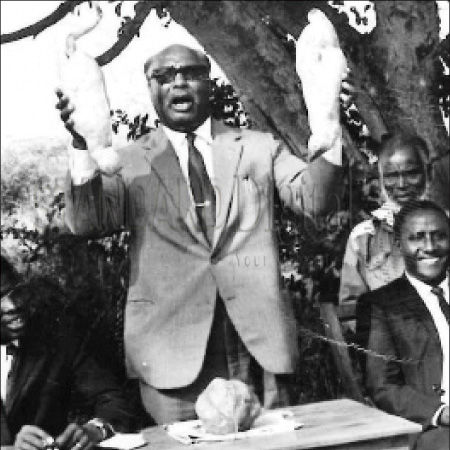×
The Standard e-Paper
Read Offline Anywhere
 |
| Jackson Harvester Angaine in his heyday. [PHOTO: FILE/STANDARD] |
By KENNETH KWAMA
Jackson Harvester Angaine who died holding onto the title of the King of Meru had many firsts in his political career. His firm grip on Meru politics for many years was achieved through wit and an iron fist.